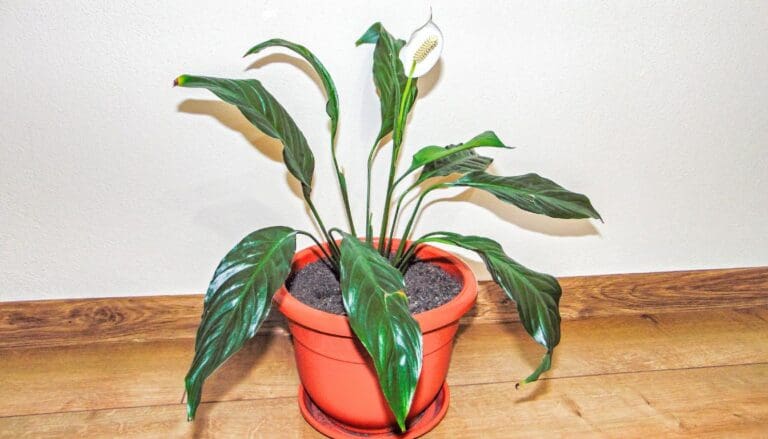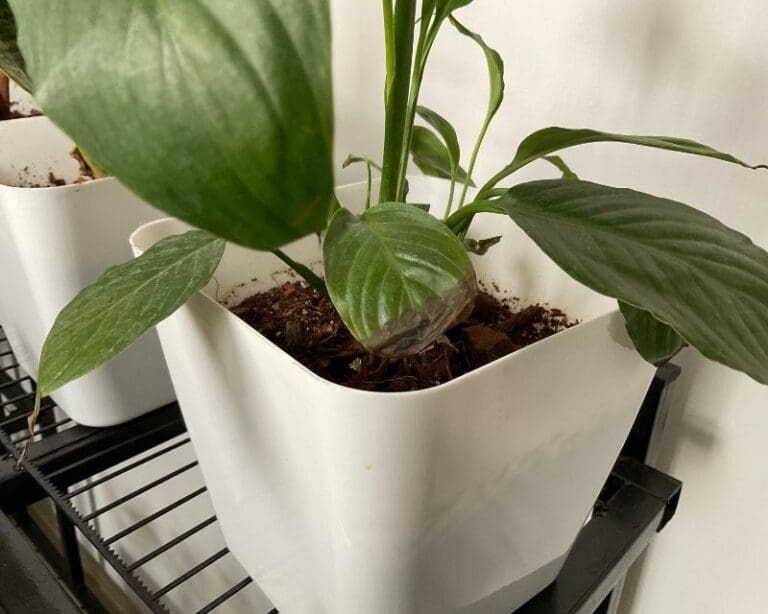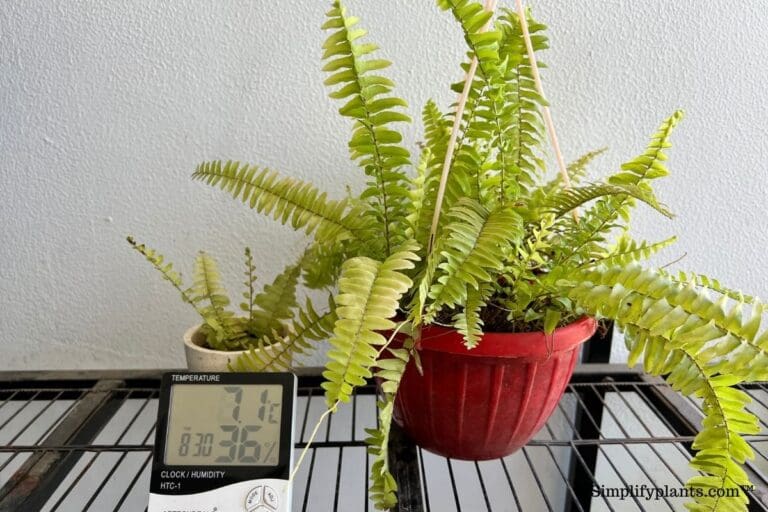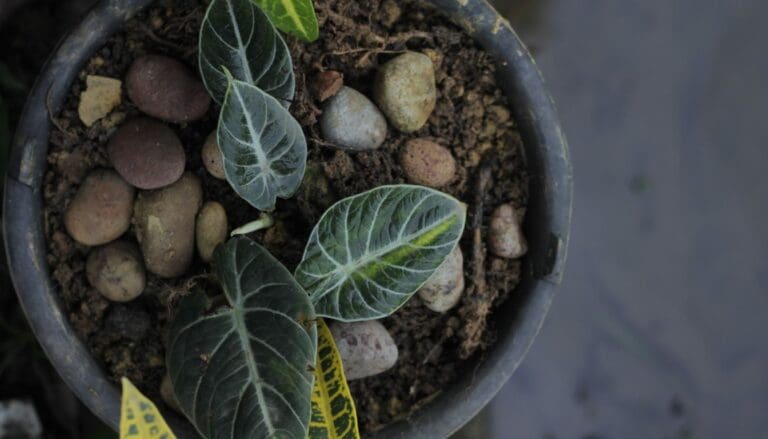Why Is My Boston Fern Turning Brown? (Possible Causes+Fix)
Boston fern is one of the best air-purifying houseplants. But this plant needs proper attention and care if you want to keep it healthy. Ignoring the basic requirements can disturb your Boston fern, and the plant can easily develop brown leaves.
Direct intense sunlight, low humidity, and inadequate watering are the primary causes of brown leaves in Boston fern. Prune the brown leaves and identify the correct reason behind brown leaves. Maintain proper watering, lighting, humidity, temperature, and fertilization to prevent the issue.
You can easily fix your Boston fern once you know the possible reasons behind the brown leaves. This article will discuss all the possible reasons that can cause brown leaves along with the possible cure.

Please note: Simplify Plants is reader-supported. Some links in the post are affiliate links and I get a commission from purchases made through links in the post.
Why is my Boston fern turning brown?
Brown leaves are one of the common problems faced by almost every houseplant once in their lifetime.
If you notice brown leaves on your Boston fern plant, your plant is struggling with something and needs proper attention to get back to its normal health.
Many reasons can cause brown leaves on your Boston fern plant.
- Exposure to direct sunlight
- Overwatering
- Underwatering
- Low humidity
- Overfertilization
- Temperature stress
- Poor soil drainage
- Poor water quality
- Pest infestations
- Repotting stress or Acclimatization
- Natural aging
Let us discuss each point in detail to know the exact reason behind the brown leaves on your Boston fern.
Exposure to direct sunlight

Boston fern is a sensitive plant that can’t tolerate even a little bit of direct sunlight.
This Boston fern grows best in bright indirect sunlight, so keeping it under direct sunlight for a longer period can cause scorched and crispy brown leaves.
This happens because excessive heat increases the evaporation rate, which causes too much moisture loss from the leaves.
Due to low moisture, the plant becomes dehydrated, and the leaves turn brown.
Not only direct sunlight but the heat coming from heaters or radiators can also cause the same problem.
How to fix this?
If you notice that only the upper surface of the leaves has turned brown while the lower surface is unaffected, it is due to direct exposure to the sunlight.
- To fix this, move your Boston fern to a spot where the light is indirect.
- Make sure you keep the plant far away from heating objects.
- Then remove all the brown and damaged leaves from your plant.
- Provide your Boston fern with sufficient water to make the plant hydrated.
- Don’t fertilize your plant during this time and wait until it is recovered.
Also read: What Kind Of Lighting Does A Boston Fern Need?
Underwatering
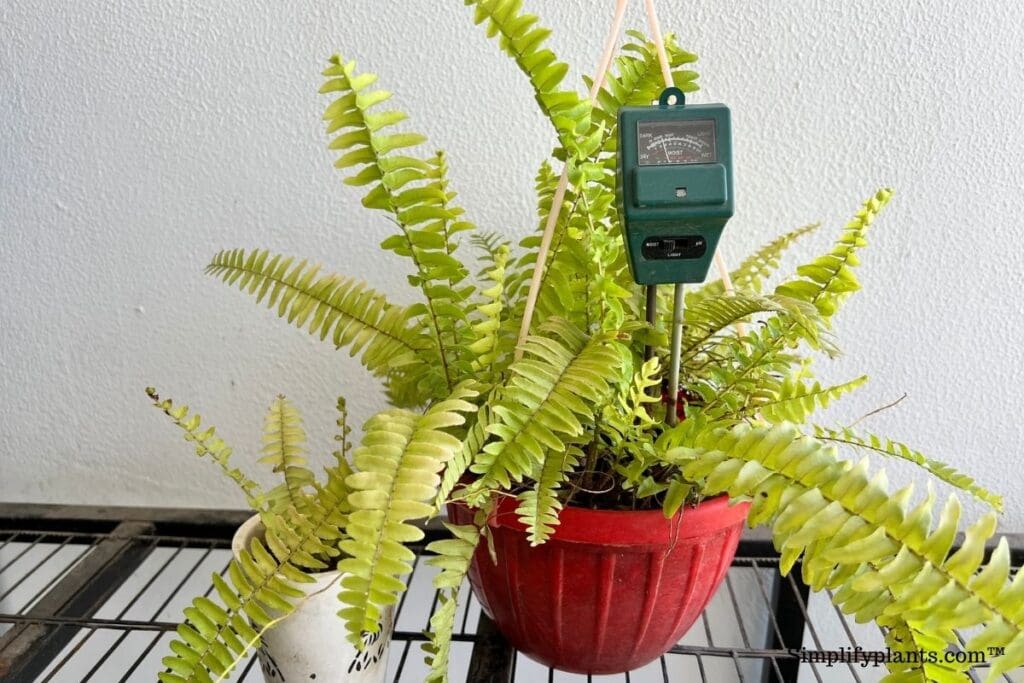
Boston ferns require evenly moist soil to survive.
If you are not providing sufficient water to this plant, it can suffer from various health problems.
Forgetting to water the plant or watering it at irregular intervals can cause underwatering.
Keeping your plant dehydrated for a longer period can be very damaging.
If Boston fern fails to get proper water, then lack of moisture and nutrients destroys the leaves’ various cells, leaving the plant extremely weak and pale.
This leads to dry, crisp, brown leaves on your Boston fern and the leaves also start to fall off if not treated on time.
How to fix an underwatered Boston fern?
If you notice curly brown and crisp leaves in your plant, it might be because of underwatering.
- To fix this, provide water to the plant and wait until the water is fully soaked into the soil.
- You can also take out the Boston fern from the pot and place it in a container filled with water. Wait until the water is fully soaked by the soil, and then place the plant back into the pot.
- If you forget when to water your plant, then make a watering schedule by using a calendar.
- You can use a self-watering kit if required.
- Ensure you don’t keep the plant in direct sunlight. Otherwise, the water will evaporate quickly.
Also read: How To Water Boston Fern? (How Often, How Much & More)
Overwatering

Many people don’t know how much to water their houseplants, so they frequently water which eventually leads to overwatering.
Overwatering is one of the most common reasons behind brown leaves so if you notice any brown leaves, check the soil condition in the pot.
If the soil has turned soggy and the plant looks dull, you are overwatering your plant.
Boston fern needs moist soil but not soggy.
This plant can’t tolerate waterlogged conditions because excess water inside the soil suffocates the roots due to a lack of oxygen supply.
This further leads to root rot disease.
Damaged roots fail to transfer water and nutrients to different parts of the plant, and the leaves eventually start to fade and turn yellow and brown.
How to fix an overwatered Boston fern?
Brown spots on the leaves, brown edges, and a foul smell from the soil are all symptoms of overwatering.
If your Boston fern is overwatered, try to rescue the plant quickly.
- To fix this, stop watering and then place the plant in bright indirect sunlight to quickly dry out the excess water.
- Check the condition of the roots by taking them out from the soil. If you see that the roots are not damaged, place them in bright light to let them dry.
- But if the diseases infect the roots, you should prune all the decaying roots, keeping only the healthy ones, and then simply repot the plant in a whole new pot with fresh soil.
- Spray a fungicide on the healthy roots before putting the plant in the new pot.
- Water only after the plant has recovered.
Low humidity

Boston fern thrives best in humid environments and prefers a humidity level ranging between 65-75%.
Maintaining proper humidity inside the house is difficult, so this plant can develop low humidity problems.
When your Boston fern fails to get enough humidity, the leaves lose moisture because of the increased transpiration rate.
Due to lack of moisture, the leaves eventually turn brown and dry.
How to increase humidity?
There are different ways to increase the humidity, such as:
- Use a humidifier device inside your house.
- Use a pebble tray method. Take a tray, fill it with water, and place your plant in it. Evaporation will help to increase the humidity.
- You can keep bowls filled with water beside your Boston fern. This also helps to increase the humidity.
- Group your Boston fern with other moisture-loving plants.
- You can also keep your plant in the bathroom for some time as humidity is higher.
- Misting your plant with a spray can also help to raise humidity.
Also read: Should I Mist My Boston Fern? (How Often+Pros & Cons)
Over-fertilization

Many people make a mistake by fertilizing their houseplants frequently with higher doses.
They think that adding more fertilizers can boost the plant’s growth faster and can also help improve its health.
But this is a myth and works opposite in reality.
Boston ferns don’t require much fertilizer and need only a few times during their growing season.
Excessive fertilization can cause a lot of salt build-up inside the soil.
The roots take up the salt and the water and transfer them to all different plant parts.
This becomes toxic for the plant’s cells, and the leaves start to show symptoms like brown tips or edges.
How to fix an overfertilized Boston fern?
- First, remove all the damaged parts from your Boston fern.
- Then, take out the roots from the soil and check whether it is damaged or not.
- If yes, then repot the plant by removing all the infected roots.
- But if the situation is not that bad, you can simply remove the top layer of the soil and then add a new layer of potting mix.
- You can also water your plant thoroughly to reduce salt content in the soil. But make sure you don’t overwater your plant.
Also read: Should I Fertilize My Boston Fern? (Ideal Fertilizer+When & How Much)
Temperature stress

Boston fern prefers a warm temperature between 60-75°F.
If your Boston fern grows at the wrong temperature or is exposed to too many temperature fluctuations, all these will cause brown tips on their leaves.
If Boston fern is exposed to extremely high temperatures, the plant can experience dehydration that causes browning edges, curling, and wilting of leaves.
In case of sudden temperature fluctuations, Boston fern starts to get too much stress, and due to this, the plant begins to show symptoms like brown edges or tips on leaves.
How to protect Boston fern from temperature stress?
If you don’t want your Boston fern to get stressed, then follow all these steps given below:
- Avoid keeping your Boston fern near windows or doors that open and close frequently. Change the location if you are doing so.
- Keep the plant away from heating sources like fireplaces, heaters, radiators, etc.
- Don’t keep the plant near frosty windows to avoid stress.
- Protect the Boston fern from cold and hot drafts.
- Never provide AC to your Boston fern. It can cause harm to an extreme level.
- Don’t expose your plant to the outside environment when the temperatures are extremely high or low.
- Never change the location of the plant frequently. Do this gradually.
Poor soil drainage

Soil plays an essential role in the growth of a plant.
If you are using the soil that is draining too fast or too slow, it can lead to underwatering and overwatering.
Both of these problems are very harmful.
When the soil fails to retain enough moisture, the Boston fern can dehydrate, leading to yellow or brown spots or brown leaves.
But when the soil is too compact, the plant can frequently suffer from waterlogged conditions that hamper the roots, leading to brown edges on leaves.
How to improve the soil texture?
If your Boston fern grows in incorrect soil, you need to add some ingredients to improve the soil texture.
If the soil is too compact, you can improve its drainage by adding sand, compost, and perlite.
And if the soil is too loose, you can increase its moisture retention by adding mulch, vermiculite, and peat moss to the soil.
But if you want to do a new start, you can use fresh soil that contains 1 part of perlite, 2 parts of peat moss, and 1 part of vermiculite.
Also read: What Kind Of Soil For Boston Fern? (Ideal Soil Mix+How To Make)
Poor water quality
Many houseplant owners don’t know how the plant’s health is affected by the quality of water they are using.
Using water that contains hard minerals like chlorine, iron, sodium, etc., can be very harmful to your Boston fern.
All these hard minerals destroy the leaf’s cells and cause extreme discomfort to the plant.
This leads to brown tips on your Boston fern.
How to fix this?
- Provide distilled or rainwater to your Boston fern because it contains no toxic minerals.
- Avoid using tap water for your plant as it contains many hard minerals harmful to the plant.
- If it is difficult for you to provide distilled or rainwater, you can use tap water only after removing its toxic minerals. Allow the tap water to sit in a bucket or container for 24 hours so that the toxic minerals can evaporate.
Pest infestations

When exposed to unfavorable growing conditions, your Boston fern is vulnerable to pest attack.
Low light, high humidity, overwatering, poor aeration, over-fertilization, and low temperatures can encourage pests toward your plant.
Common pests that can attack Boston fern are spider mites, caterpillars, mealybugs, thrips, and scales.
All these pests feed on the leaves and suck all the important nutrients from the plants.
The plant becomes weak because of low nutrients, and the leaves slowly start to turn pale and brown.
When all these pests stay in your Boston fern for a prolonged period, it becomes difficult to get rid of them.
How do you get rid of pests?
- Isolate the plant and then find out which pest has attacked your Boston fern.
- Wash your entire plant with water to remove the pests.
- If the pests are visible, take a cotton ball and dip it in the alcohol. Wipe the infected areas to get rid of the remaining pests.
- Spray the plant with horticulture oil or Neem oil for 3 days daily. Even if the pests are visible, spray the solution again.
- You can also use a non-detergent soap or vinegar as a solution.
- Avoid keeping the plant in high humidity until the plant recovers.
Repotting stress or Acclimatization

If you have recently repotted your Boston fern or changed the plant’s location, the leaves can turn brown due to stress.
A sudden change in environment can shock the Boston fern for some time, so you don’t have to worry about this.
Wait for some days until the plant adjusts to its new environment.
Also, after repotting, provide proper care to your Boston fern to reduce some stress.
Also read: What Kind Of Pot Is Best For a Boston Fern? (Size, Material & More)
Natural aging
When your Boston fern has matured completely, and it’s the end of the life cycle, the leaves will turn brown naturally.
At the end of its life cycle, the entire leaf slowly turns brown, and then it falls off the plant automatically.
There is no treatment for this natural cause, and it happens to all kinds of houseplants, so don’t worry about it.
How to prune brown leaves from Boston fern?

Brown leaves can never turn into green color again.
So, it is best to prune all the damaged leaves to encourage new growth.
Even if the leaves have developed yellow or brown spots and bloated patches, it is best to remove them.
Use sharp and sterilized scissors or pruners to make clear and clean cuts for pruning.
Don’t prune too many leaves at once, and also don’t try to cut ranging above 25%.
Otherwise, it might stress your plant.
Final words
Your Boston fern turning brown is a common problem. But you can prevent this by taking care of your plant properly without ignoring their basic needs.
Ensure your Boston fern gets proper indirect light, adequate watering, and proper fertilizers during its growing season to save it from brown leaves.
Spray your houseplant with Neem oil every month to prevent the plant from getting infected by pests and diseases. Always look after your Boston fern frequently to avoid any such problems.
Reference: University of Florida, The University of Arkansas Division, Texas A&M University System, The University of Georgia, University of New Hampshire, Wikipedia, The Royal Horticultural Society.
Recommended Garden Supplies
| Product Image | Our Recommended Gardening Supplies | Check Offers! |
|---|---|---|
Top Top
Top
Top
Top
Top
Top
Top
Top | rePotme Houseplant and Tropical Classic Potting Soil Mix | Check Offer On Amazon |
 Top
Top
Top
Top
Top
Top
Top
Top | Espoma Organic Indoor Plant Food | Check Offer On Amazon |
 Top
Top
Top
Top
Top
Top
Top
Top | GooingTop LED Grow Light 6000K Full Spectrum Clip Plant Growing Lamp | Check Offer On Amazon |
 Top
Top
Top
Top
Top
Top
Top
Top | Soil Moisture Meter | Check Offer On Amazon |
 Top
Top
Top
Top
Top
Top
Top
Top | Govee Hygrometer Thermometer, Bluetooth Enabled! | Check Offer On Amazon |
 Top
Top | LEVOIT Humidifiers for Large Room(Best For Plants) | Check Offer On Amazon |
 Top
Top
Top
Top
Top
Top
Top
Top | Upgraded DIY Automatic Drip Irrigation Kit, 15 Potted Houseplants Support | Check Offer On Amazon |
 Top
Top
Top
Top
Top
Top
Top
Top | Stainless Steel Heavy Duty Gardening Tool Set | Check Offer On Amazon |
 Top
Top
Top
Top
Top
Top
Top
Top | Bonide Insecticidal Soap | Check Offer On Amazon |
 Top
Top
Top
Top
Top
Top
Top
Top | Bonide 32 oz Spray Neem Oil for Organic Gardening | Check Offer On Amazon |
 Top
Top
Top
Top
Top
Top
Top
Top | Garden Safe Fungicide | Check Offer On Amazon |

